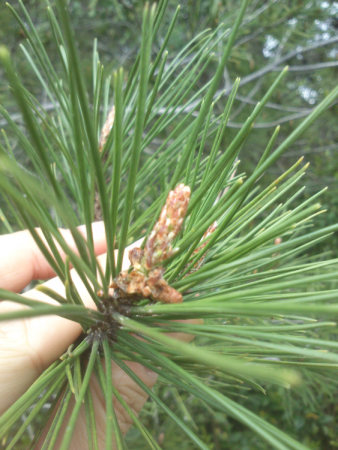I know about spruce, and pine is a really close relative, so it seems legit to me. I was planning to use the brown part in the picture, which has a really nice smell.

I would like some advices:
- Can I use it with no health risk?
- When to put it in boil? I read a recipe suggesting to boil it 60 minutes, what bout boiling it for 15 or 30 minutes?